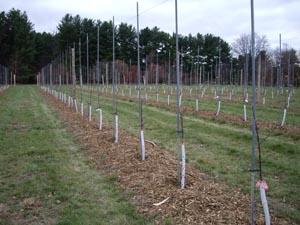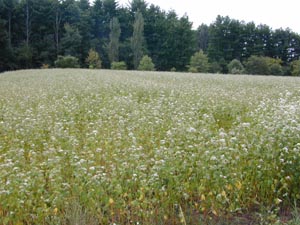
Renae E. Moran, M. Elena Garcia, Lorraine P. Berkett, Terence L. Bradshaw, Sarah Kingsley-Richards, Heather M. Darby, John P. Hayden, and Robert L. Parsons
How to plant apple trees is one of the most often-requested pieces of information. The following are the steps that were taken to plant an apple orchard at the University of Vermont Horticultural Research Center, South Burlington, VT, and some of the steps during first-year maintenance. This orchard is part of a USDA Integrated Organic Program project and will be managed using organically-accepted methods. Please note that there are other options or other techniques that can be used to plant an orchard. This publication is solely intended to be a pictorial presentation of some of the options available to you.
Plant buckwheat in open field one season prior to planting orchard.

Mow buckwheat prior to marking location of tree rows.
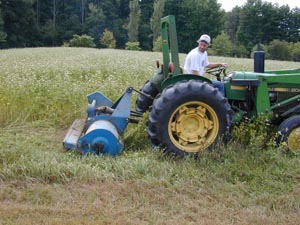
Spread compost in tree rows.

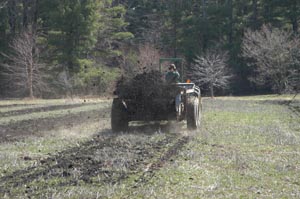
Till compost into soil while breaking up the sod in the tree rows.
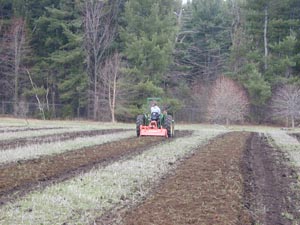
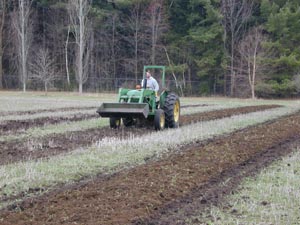
Mark tree location within row using a calibrated planting chain.


Dig holes large enough to accommodate the roots at marked locations.
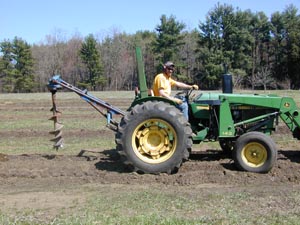
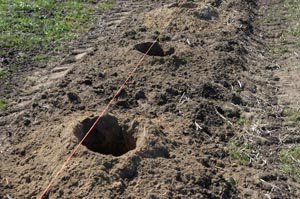
Store trees in cool space until ready to plant.

Sort trees (if necessary) and place in buckets of water for transport into field.

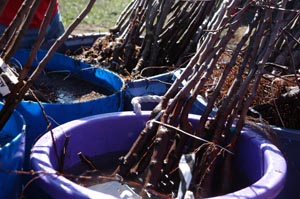
You may want to lightly prune the roots.
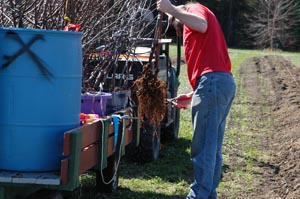
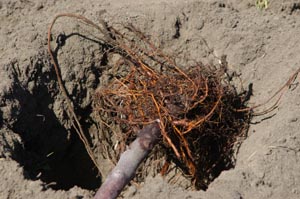
Spread the roots out in the hole. The graft union (where the scion and rootstock meet) should be 2 to 5 inches above the ground. Make sure that the graft union is facing 90° against the wind direction (so as to help prevent breakage). Fill the hole with soil and gently tamp it down to get rid of any air pockets.
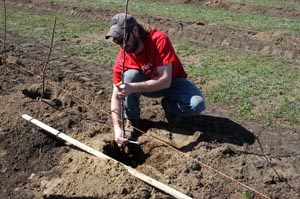

Trees in place.
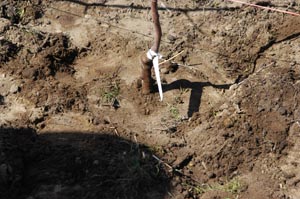
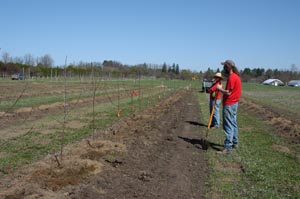
Water immediately by hand or lay irrigation line. Keep irrigated.


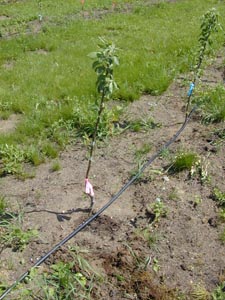
Head back the tree with a diagonal cut so the tree is approximately 36" in height. Cut just above a bud, if possible. If branches are present cut 10”-12" above the highest branch. Also, remove any branches or buds below two feet.
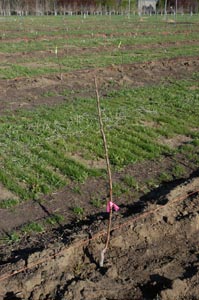
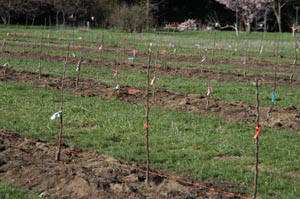
New growth.


As new growth begins in the spring, be sure to spread the limbs to get the desired limb angles (this can be done with clothes pins).
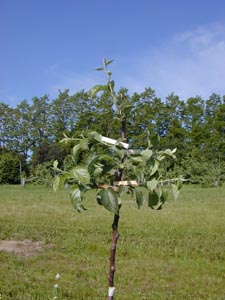

An electric fence may be necessary to deter deer feeding on newly planted trees.

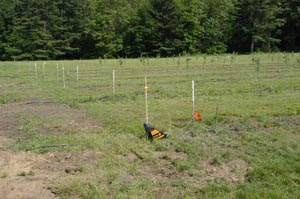
Dig holes to set trellis posts.






Set anchors for trellis wire.


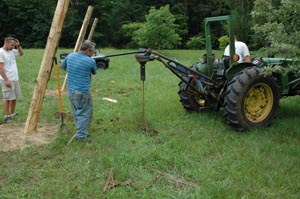

Posts and wires in place.

Set aluminum poles to support each tree.
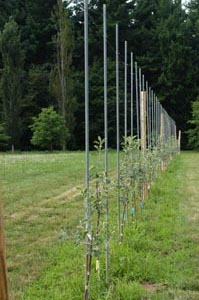
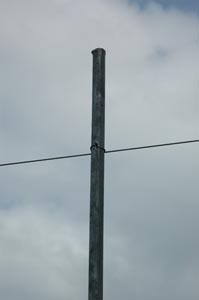
Loosely tie the tree to the pole with a plastic or fabric tie.
A mouse guard should be placed around the tree trunk and cover the bottom two feet. Note: Wire mesh guards are preferred over the solid wrap plastic guards to allow for wind and sun penetration to bark.
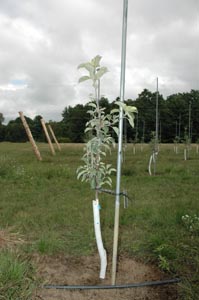
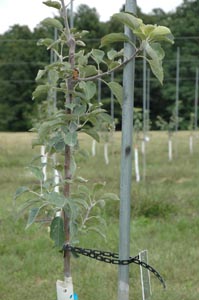
Final trellis in place.
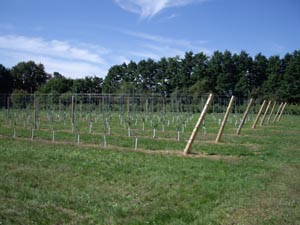
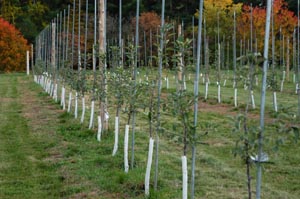
Keep a reduced-weed zone around base of each tree.


Chipped mulch can be applied to suppress weeds.
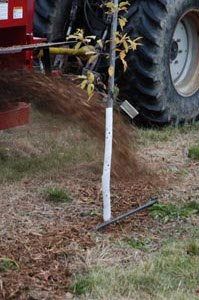

Pull back mulch away from the base of each tree.
In the dormant season, prune trees according to the recommendations for the training system selected for the orchard.
